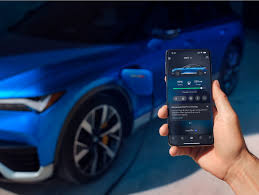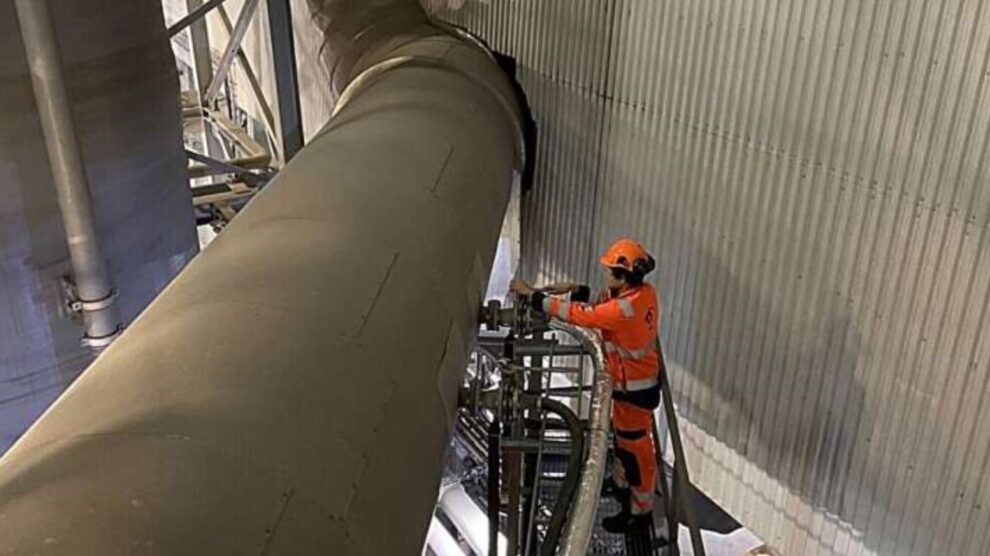Scientists Make Game-Changing Breakthrough with Home HVAC-Inspired Tech, scientists have recently unveiled a breakthrough that draws inspiration from existing HVAC (Heating, Ventilation, and Air Conditioning) technology. This innovative solution has the potential to revolutionize energy consumption and create a more sustainable and eco-friendly future. The development is being hailed as a major step forward in improving the performance of heating and cooling systems in residential buildings. As the demand for energy-efficient technology grows, this breakthrough could have far-reaching implications for the environment, utility bills, and the way we manage indoor climate control.

HVAC systems are an essential part of modern homes, responsible for maintaining comfortable temperatures and air quality. However, traditional HVAC systems often face challenges related to energy consumption and inefficiency, leading to high utility costs and environmental concerns. The new breakthrough, however, promises to address many of these issues by introducing an innovative solution that reimagines how HVAC systems operate. By drawing from the underlying principles of these systems, scientists have created a new technology that enhances the energy efficiency and sustainability of home climate control in ways that were previously thought impossible.
What makes this development so significant is that it uses familiar concepts from existing HVAC systems but applies them in a novel manner. The new technology introduces a system that operates more efficiently and uses less energy while maintaining optimal comfort levels in the home. One of the key innovations is the integration of advanced materials and smart sensors that allow the system to respond dynamically to environmental changes. Unlike traditional HVAC systems that operate based on preset temperature settings, this new system can adapt in real time to fluctuations in both internal and external conditions.
At the heart of this breakthrough is the use of energy-efficient components that reduce the overall energy demand of the system. Traditional HVAC units often rely on compressors and fans that use significant amounts of electricity. The new technology uses a combination of renewable energy sources, such as solar and wind, along with energy-saving materials to reduce the need for power from the grid. This not only lowers energy consumption but also reduces the carbon footprint of the home, contributing to a greener environment. By optimizing the energy efficiency of each component, the system offers a more sustainable and cost-effective solution for homeowners.
Another crucial aspect of the technology is the integration of advanced smart sensors that continuously monitor the home’s climate. These sensors track temperature, humidity, air quality, and even the presence of occupants to ensure that the system is always operating at peak efficiency. The system can adjust airflow and heating or cooling output based on real-time data, ensuring that energy is only used when needed. This eliminates the wastefulness associated with traditional HVAC systems, where energy is often consumed unnecessarily, such as when rooms are empty or when the temperature has already reached the desired level.
The new technology also incorporates sophisticated algorithms and machine learning models that enable the system to learn and improve over time. As the system gathers data about the home’s environment and the behavior of its occupants, it can adjust its operation to match the specific needs of each household. For instance, if the system detects that a family typically spends more time in certain rooms at certain times of day, it can adjust the heating or cooling output in those rooms while reducing energy use in others. This personalized approach ensures that the system operates as efficiently as possible, delivering comfort where it’s needed most while minimizing waste.
One of the most promising aspects of this breakthrough is the potential for widespread adoption. The new technology is designed to be scalable, meaning it can be applied to a variety of homes, from small apartments to large houses. Additionally, it is compatible with existing HVAC systems, allowing homeowners to upgrade their current systems without requiring a complete overhaul. This flexibility makes the technology more accessible to a broader audience, ensuring that more people can benefit from its energy-saving and sustainability advantages.
In addition to residential applications, this technology has significant implications for commercial and industrial sectors as well. Businesses and institutions that rely heavily on HVAC systems could also see substantial cost savings and improvements in energy efficiency by adopting this new technology. The ability to retrofit existing systems with these advanced components means that companies can upgrade their infrastructure without incurring the costs and disruptions associated with a full system replacement. This could make the technology particularly appealing for commercial properties, schools, hospitals, and other large buildings that require constant climate control.
While the technology’s potential for energy efficiency and cost savings is clear, its environmental benefits are perhaps even more significant. As the world continues to grapple with the effects of climate change and strives to reduce carbon emissions, innovations like this one offer a promising solution. By reducing the energy consumption of HVAC systems and enabling the use of renewable energy sources, this technology can help lower overall greenhouse gas emissions. This aligns with global efforts to transition to a more sustainable future by reducing dependence on fossil fuels and decreasing the environmental impact of everyday activities.
For homeowners, the adoption of this new HVAC-inspired technology could lead to reduced energy bills, improved comfort, and a greater sense of control over their living environment. The system’s ability to adjust in real-time and learn from household patterns means that users can enjoy a more personalized climate experience while also contributing to energy conservation efforts. As the technology becomes more widely available, it has the potential to reshape how homes and buildings are managed in terms of energy efficiency, helping to create a more sustainable future for all.
In conclusion, the breakthrough achieved by scientists with home HVAC-inspired technology represents a major step forward in energy efficiency and sustainability. By improving the performance of HVAC systems and reducing their environmental impact, this new technology offers a compelling solution for homeowners, businesses, and the planet. With the ability to adapt to changing conditions, optimize energy use, and incorporate renewable energy sources, it provides a glimpse into the future of climate control. As this technology continues to evolve, it could transform the way we manage energy in our homes and businesses, offering both economic and environmental benefits.
This innovation could be one of the key drivers in the push toward greener, more sustainable buildings, helping to make energy-efficient climate control systems the standard rather than the exception. As more homeowners and businesses embrace this technology, the collective impact could be significant, not only in terms of cost savings but also in reducing the carbon footprint of buildings worldwide.










Add Comment